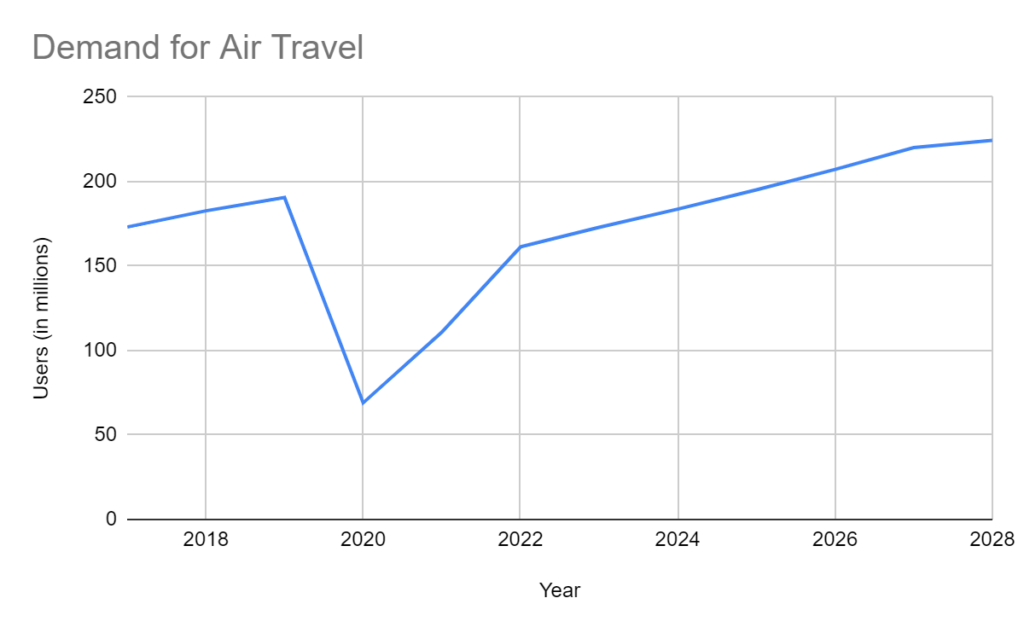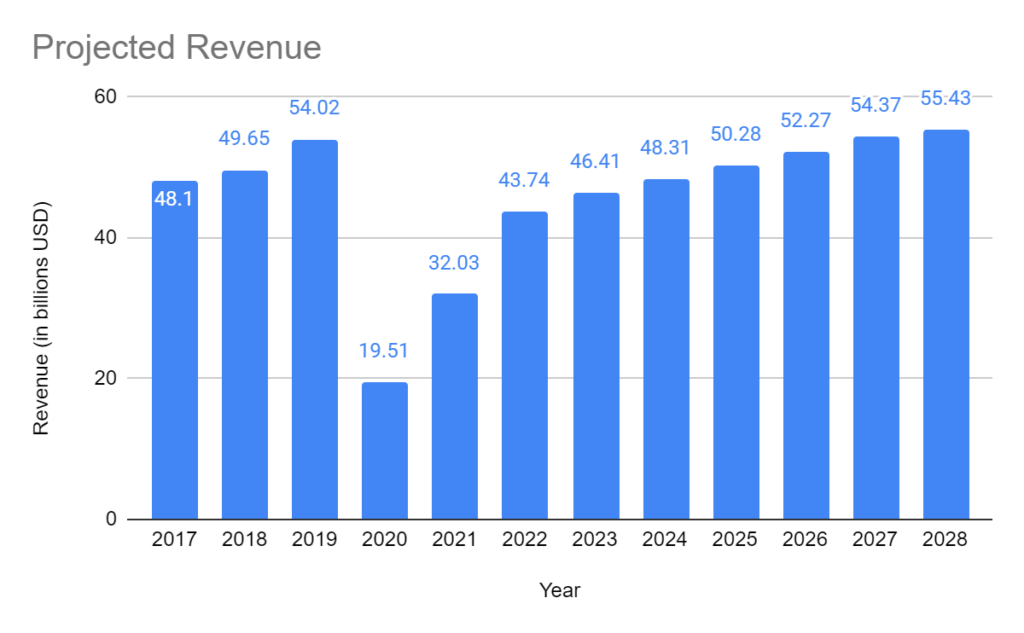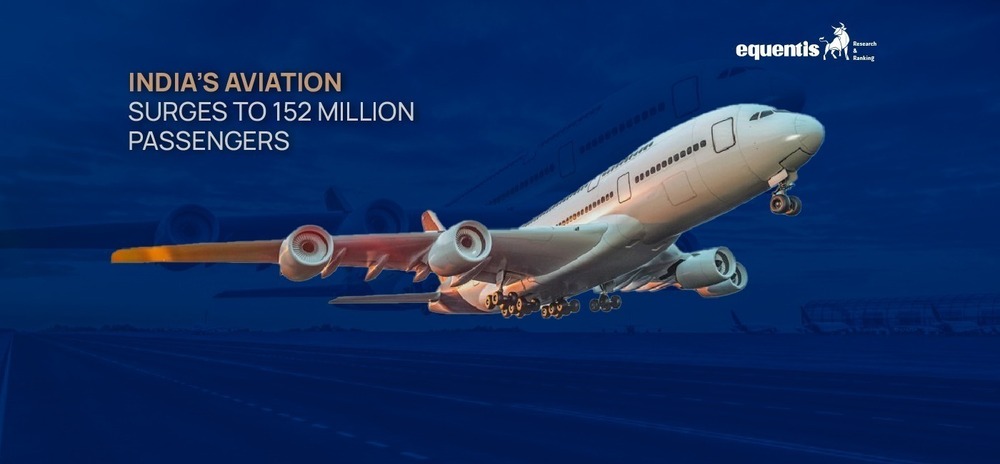India’s aviation sector is not just growing; it’s booming. The industry has witnessed a remarkable transformation with a burgeoning middle class, increased competition, and a supportive policy framework. Here’s an in-depth look at the factors propelling India’s aviation ascent and the challenges ahead.
The Surge in Air Travel Demand
The demand for air travel in India has seen an exponential rise. Before the pandemic, the number of domestic passengers alone doubled from 60 million in 2014 to 143 million in 2020, reaching a staggering 152 million in 2023. This surge is driven by:

Rising Incomes
India’s economic expansion has been a catalyst for increased disposable incomes among its citizens. As the nation’s GDP grows, so does its purchasing power. This financial upliftment has made air travel, once considered a luxury, now a viable option for a larger segment of the population.
The middle class, in particular, has seen a significant rise in income levels, enabling them to opt for the speed and convenience of flights over traditional modes of transport like rail and road for both business and leisure travel.
Low-Cost Carriers
The advent of low-cost carriers (LCCs) has revolutionized Indian aviation. By stripping down services to the essentials and optimizing operational costs, these airlines have been able to offer significantly lower fares compared to their full-service counterparts. This has opened the doors of air travel to a demographic that previously could not afford it, effectively democratizing the skies.
The competitive pricing strategies of LCCs have also spurred a price war, leading to more affordable air travel across the board. This can also be seen in the numbers while the projected demand is rising high, the revenue for the airline industry is not changing much.

Infrastructure Expansion
The Indian government’s ambitious UDAN (Ude Desh ka Aam Naagrik) scheme is transforming the country’s aviation infrastructure. With a goal to develop 100 airports by 2024, of which 76 are already operational, the scheme is enhancing connectivity, especially in underserved and unserved regions.
This expansion is about constructing new airports and upgrading existing ones to handle the increased traffic efficiently. By improving accessibility and reducing travel time, the UDAN scheme is set to play a pivotal role in supporting the continued growth of air travel demand in India.
Record-Breaking Aircraft Orders
The Indian aviation industry is witnessing an unprecedented surge in growth, as evidenced by the massive aircraft orders placed by the nation’s leading airlines. IndiGo, the largest airline in India by passengers carried and fleet size, has made a historic move with its order for 500 Airbus A320neo family aircraft. This deal signifies IndiGo’s commitment to expanding its operations and reflects the growing demand for air travel in the region.
Similarly, Air India has placed a colossal order for 470 aircraft, including the technologically advanced Boeing 787 Dreamliners and the fuel-efficient Airbus A350s. These orders are a testament to the aviation sector’s optimistic outlook and readiness to cater to the burgeoning travel needs of the population.
Market Predictions
Industry experts have cast strong forecasts for the Indian aviation market. By the conclusion of 2024, it is anticipated that India will overtake the United Kingdom to secure its position as the third-largest market for air passengers globally. The foundation for this prediction is the projected requirement for approximately 2,210 new aircraft over the forthcoming twenty years. This fleet expansion will encompass a diverse range of aircraft sizes, from smaller regional planes to medium and large-sized carriers, ensuring comprehensive coverage of both domestic and international routes.
Economic Contributions
The aviation sector significantly contributes to India’s economy, injecting an impressive $30 billion annually into the nation’s GDP. The expectations for growth in this sector extend beyond mere numbers; the industry is poised for a transformative impact on the country’s economic landscape. The expansion of the aviation sector is intricately linked to the broader goal of enhancing nationwide connectivity and fostering economic development. It plays a crucial role in facilitating business travel, tourism, and trade, thereby driving progress and prosperity across various sectors of the economy.
Challenges Ahead
Despite the buoyant predictions and the flurry of activity in the Indian aviation sector, there are several challenges that need to be addressed to ensure sustainable and efficient growth:
- Infrastructure: One of the most pressing issues is the need for substantial improvements in airport infrastructure. As the number of air passengers continues to climb, existing facilities are being stretched to their limits. There is a critical need for constructing new airports, expanding and modernizing current terminals, and enhancing air traffic control systems to handle the increased flight operations. These upgrades are essential to accommodate the growing traffic, maintain safety standards, and improve the overall passenger experience.
- Sustainability: Another significant challenge is the environmental impact of the expanding aviation industry. The flight increase translates to higher fuel consumption and greater carbon emissions, contributing to climate change. The industry must adopt more sustainable practices, such as investing in fuel-efficient aircraft, exploring alternative fuels, and implementing carbon offset programs. These measures are crucial to minimize the ecological footprint of air travel and align with global efforts to combat environmental degradation.
- Skilled Workforce: The aviation sector’s expansion also demands a larger pool of skilled professionals. From pilots and cabin crew to ground staff and maintenance engineers, the industry requires a well-trained workforce to support its growth trajectory. This entails recruiting more individuals and providing comprehensive training and continuous professional development opportunities. Investing in human capital is vital to ensure that the workforce can meet the industry’s evolving demands and maintain the highest levels of service and safety.
Conclusion
India’s aviation sector is on a trajectory that promises to redefine its economic landscape. The industry’s growth is a testament to the country’s potential and people’s aspirations. As we witness this skyward journey, addressing the challenges to ensure sustainable and inclusive growth is crucial.
*Disclaimer Note: The securities quoted, if any, are for illustration only and are not recommendatory. This article is for education purposes only and shall not be considered as recommendation or investment advice by Research & Ranking. We will not be liable for any losses that may occur. Investment in securities market are subject to market risks. Read all the related documents carefully before investing. Registration granted by SEBI, membership of BASL, and certification from NISM in no way guarantee the performance of the intermediary or provide any assurance of returns to investors.
FAQs
What factors are contributing to the surge in India’s aviation sector?
A burgeoning middle class, increased competition, and a supportive policy framework primarily drive the surge. The rise in disposable incomes, the introduction of low-cost carriers, and government initiatives like the UDAN scheme have significantly transformed the industry.
How has the demand for air travel changed in recent years?
The demand for air travel in India has seen an exponential rise, with the number of domestic passengers doubling from 60 million in 2014 to 143 million in 2020 and reaching 152 million in 2023.
What impact does rising income have on air travel?
India’s economic growth has led to increased disposable incomes, making air travel accessible to a larger segment of the population, especially the middle class.
How have low-cost carriers affected the aviation industry?
Low-cost carriers have democratized air travel by offering affordable fares, which has opened up air travel to a wider demographic and spurred a price war, leading to more affordable options for all.
What is the UDAN scheme, and how is it transforming aviation infrastructure?
The UDAN (Ude Desh ka Aam Naagrik) scheme aims to develop 100 airports by 2024, enhancing connectivity, especially in underserved regions, and improving accessibility and travel time.
How useful was this post?
Click on a star to rate it!
Average rating 5 / 5. Vote count: 1
No votes so far! Be the first to rate this post.
I’m Archana R. Chettiar, an experienced content creator with
an affinity for writing on personal finance and other financial content. I
love to write on equity investing, retirement, managing money, and more.
-
Archana Chettiarhttps://www.equentis.com/blog/author/archana/
-
Archana Chettiarhttps://www.equentis.com/blog/author/archana/
-
Archana Chettiarhttps://www.equentis.com/blog/author/archana/
-
Archana Chettiarhttps://www.equentis.com/blog/author/archana/

